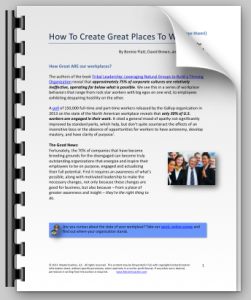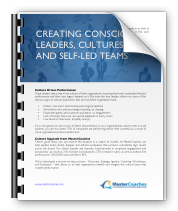 We recently worked with a leadership team in the entertainment industry. They are experiencing significant industry changes and our client is facing enormous pressures to deliver more with less and to find ways to collaborate and support each other more. We were hired to foster and encourage peer support, collaboration and enhance creativity.
We recently worked with a leadership team in the entertainment industry. They are experiencing significant industry changes and our client is facing enormous pressures to deliver more with less and to find ways to collaborate and support each other more. We were hired to foster and encourage peer support, collaboration and enhance creativity.
When we first started with the team we experienced angst and felt their frustration, anger and distrust of each other and the organization. People were showing up to the calls because they had to and not because of the gifts being offered to them.
- They were not connected to why they were here or what was really important to them.
- This lack of connection was showing up in other places as well. It was affecting their teams, families, community and their lives.
- They were experiencing a ‘purpose/values blindness’.
This was not surprising to us – 7 out of 10 people you know who work, including your friends and family, are disengaged from what they spend most of their waking hours doing.
 But we can change that and make the biggest difference as leaders, because what we stand for will drive and support what our team stands for. In turn, this will ignite and drive results bigger than what we can create on our own.
But we can change that and make the biggest difference as leaders, because what we stand for will drive and support what our team stands for. In turn, this will ignite and drive results bigger than what we can create on our own.
In our last post we looked at five action steps a leader can take to increase self-awareness in the service of embracing multiple perspectives. Part 2 of our CLUE series (Conscious Leadership Uncovering Excellence) focuses on the interior aspects of leadership that uncover excellence and deliver great results. In a nutshell, the solution is to embrace differences and find common ground on what’s most important. That includes mission, vision, core values and edge, the key drivers and attractors that galvanize a team and a company.
While the complexity of the process depends upon the participants, there is a proven framework to guide it. Artful facilitation within that framework becomes a powerful crucible that leaves an imprint and an ‘in the bones’ alignment and commitment within and between each team member.
Here is the framework and approach:
- Start with your Vision: This is your North Star, your dream of where you are going. It’s critical to have a succinct compelling vision, both for you as a leader as well as for your organization. That way, when work pulls you in multiple directions you keep perspective. This is true for all employees, and facilitates autonomy and ownership. The vision begins with the leader and inspires others to engage with it and make it their own. A truly meaningful vision, like a compass leading you through a storm, will guide you to your destination.
- Next focus on your Mission: Your mission is the higher purpose served for you and your organization. It’s about why you do what you do and the unique contribution being made. A clear and compelling purpose is a huge attractor and source of loyalty for employees, customers, and other stakeholders. It distinguishes great companies from good companies.
- Then look at your Core Values: Your core values are those guiding principles and beliefs that are non-negotiable and which ground decision-making at all levels. You live by them. You hire and fire by them. Really. Great companies embrace and own their values from the inside out.
- And finally, what is your Edge? Your edge is one or more clearly defined things that your organization does better than anyone else. They could be particular talents or skills that matter to customers, neither fluffy (as in “Our people make a difference”) nor an outcome (like lower prices). Great companies pay close attention to their edge. The leader continuously evaluates what the organization does best now, and what it needs to do better to stay ahead of the competition and the changing needs of consumers.
To start moving your company from good to great you and each team member need to have clarity around these core internal drivers. Next check for alignment and misalignment both personally and organizationally.
This becomes the foundation for a cohesive high performing leadership team. You then have the meaningful common ground that leverages the diversity of your leadership team (and subsequently all your employees).
Remember our leadership team at the entertainment company? Working together they created a vision and mission for themselves as a peer group. They aligned on core values and identified their edges. The conversation changed from one of politeness and venting to one of possibility and transparency. They built trust and found new ways of working together and reaching out.
- Let us know what struck you as you examined these core areas and the associated inquiries.
- Do you see how some of the your most pressing challenges are related to gaps in these areas?
- How might this be the difference between good and great?
Part 3 of our CLUE series will explore the external drivers of leadership, like performance and outcomes.
Images under Creative Commons license: 3-D Team Leadership Arrow, Scott Maxwell on Flickr, Runaway Pulsar, NASA, on Flickr




Social Links